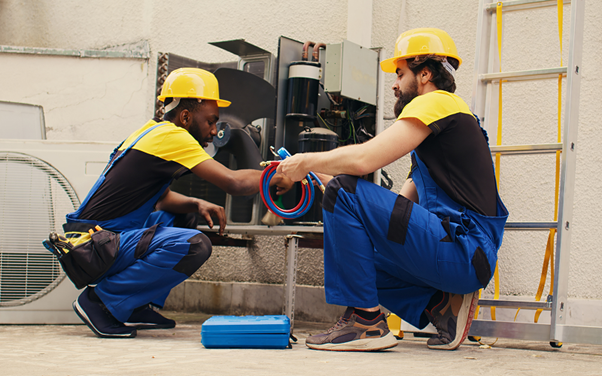An aircon pressure test is a critical diagnostic procedure for determining refrigerant integrity and system performance. However, readings can vary significantly depending on the climate in which the system operates. The differences between tropical and temperate environments influence refrigerant pressure levels, diagnostic interpretations, and the subsequent scope of air conditioning servicing and repair. Understanding these variations is essential for technicians, facility managers, and property owners to ensure accurate assessments and prevent unnecessary or misdirected repairs.
Aircon Pressure Test Readings in Tropical Climates
Amidst tropical climates, where temperatures and humidity levels remain consistently high throughout the year, refrigerant pressure readings tend to be higher due to increased ambient temperatures. This higher baseline means that technicians must account for environmental heat when interpreting gauge readings. A standard pressure that might indicate overcharging in a temperate setting could be within acceptable limits in a tropical location.
High humidity also places additional strain on the air conditioning system’s evaporator coil, increasing the latent cooling load. This instance results in higher suction pressures during the test, which can be misread as a fault if the climate context is not considered. Aircon servicing and repair schedules in these regions must be more frequent to counteract the accelerated wear caused by continuous operation. Pressure test results may also reveal refrigerant imbalances earlier than in milder climates, making regular testing a proactive maintenance measure.
Another factor in tropical climates is the temperature differential between indoor and outdoor environments. This large delta can impact head pressure readings during the test, sometimes suggesting condenser inefficiency when the system is, in fact, responding normally to the high ambient load. Due to this, technicians conducting aircon pressure tests in tropical locations must rely on both pressure readings and complementary checks, such as superheat and subcooling measurements, to validate system health.
Aircon Pressure Test Readings in Temperate Climates
On the other hand, in temperate climates, seasonal changes create variable ambient temperatures, affecting refrigerant pressures in different ways throughout the year. During cooler months, head pressure readings will naturally be lower, which can mask potential condenser coil restrictions or refrigerant undercharging. This instance means technicians must adjust their interpretation to the current season and avoid misdiagnosing issues based solely on static reference charts.
Low outdoor temperatures in temperate climates can also cause refrigerant migration into the condenser coil when the system is off, leading to low suction pressure readings during start-up. Pressure test data in such cases must be analysed alongside system warm-up behaviour to avoid unnecessary aircon servicing and repair. Conversely, during peak summer temperatures, readings may approach those seen in tropical conditions, but only for limited periods, reducing overall year-round stress on the system.
Moisture accumulation from seasonal humidity spikes in temperate climates can create intermittent restrictions in the expansion valve or filter drier. These issues may only be detectable during specific weather conditions, meaning that a single aircon pressure test may not provide the full operational picture. Service schedules in temperate regions often recommend testing during both heating and cooling seasons to identify issues across the operational range.
Implications for Technicians and Property Owners
The key takeaway for technicians is that aircon pressure test results cannot be universally interpreted without factoring in climate conditions. Pressure ranges that signal a fault in one region may be completely normal in another. Meanwhile, for property owners, especially those managing assets across different geographical locations, understanding this distinction helps ensure they commission the right aircon servicing and repair work without incurring unnecessary costs.
Accurate testing in both climates relies on combining pressure readings with complementary diagnostic checks, such as airflow measurements, temperature differentials, and refrigerant analysis. This integrated approach ensures that servicing actions are based on verified performance issues rather than climate-driven pressure fluctuations.
Conclusion
Climate plays a decisive role in how aircon pressure test readings should be interpreted. Tropical climates produce consistently higher pressures, while temperate regions create seasonal variations that require a flexible diagnostic approach. Ignoring these environmental factors can lead to misdiagnosis, unnecessary servicing, or overlooked faults. Climate-aware testing is essential for both technicians and property owners as it helps ensure that the air conditioning servicing and repair deliver the intended performance benefits and extend system life.
Contact Airple and ensure your system is tested with climate conditions in mind.


